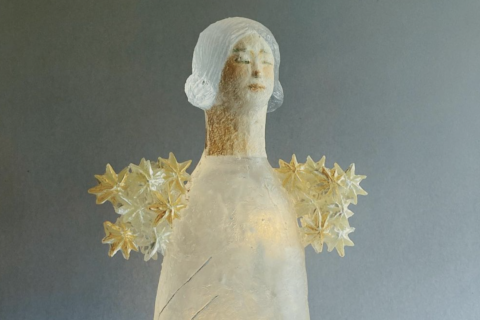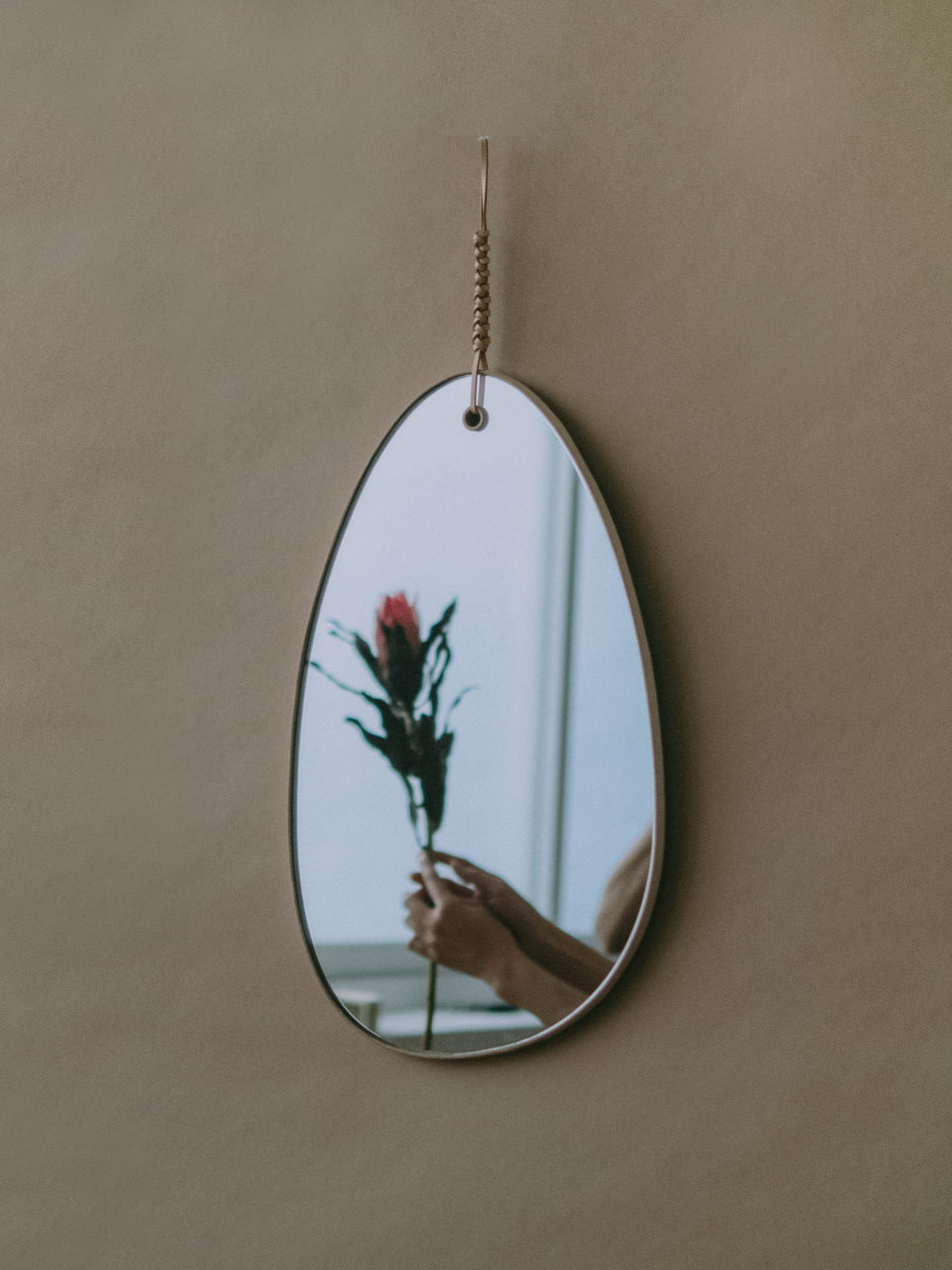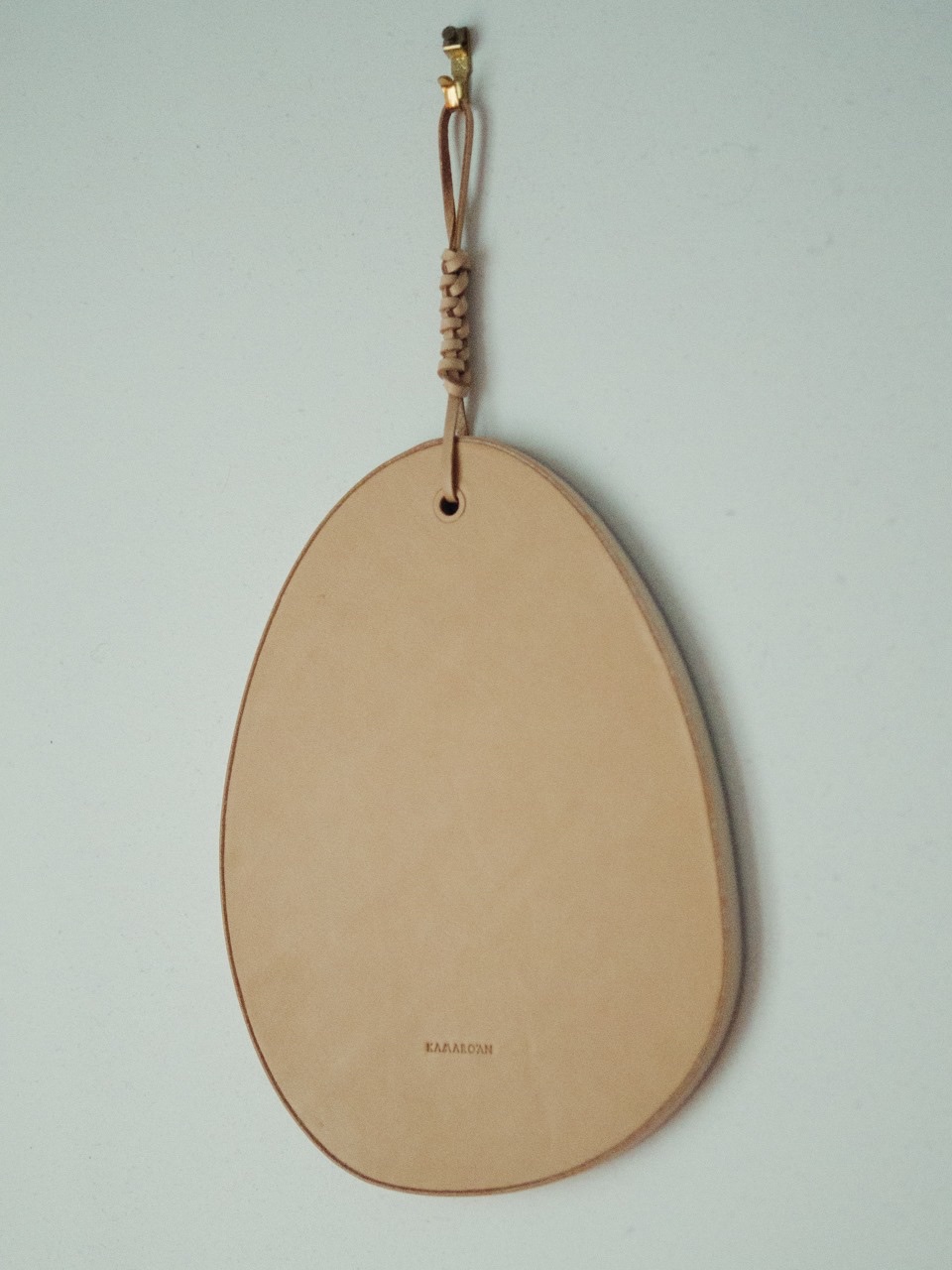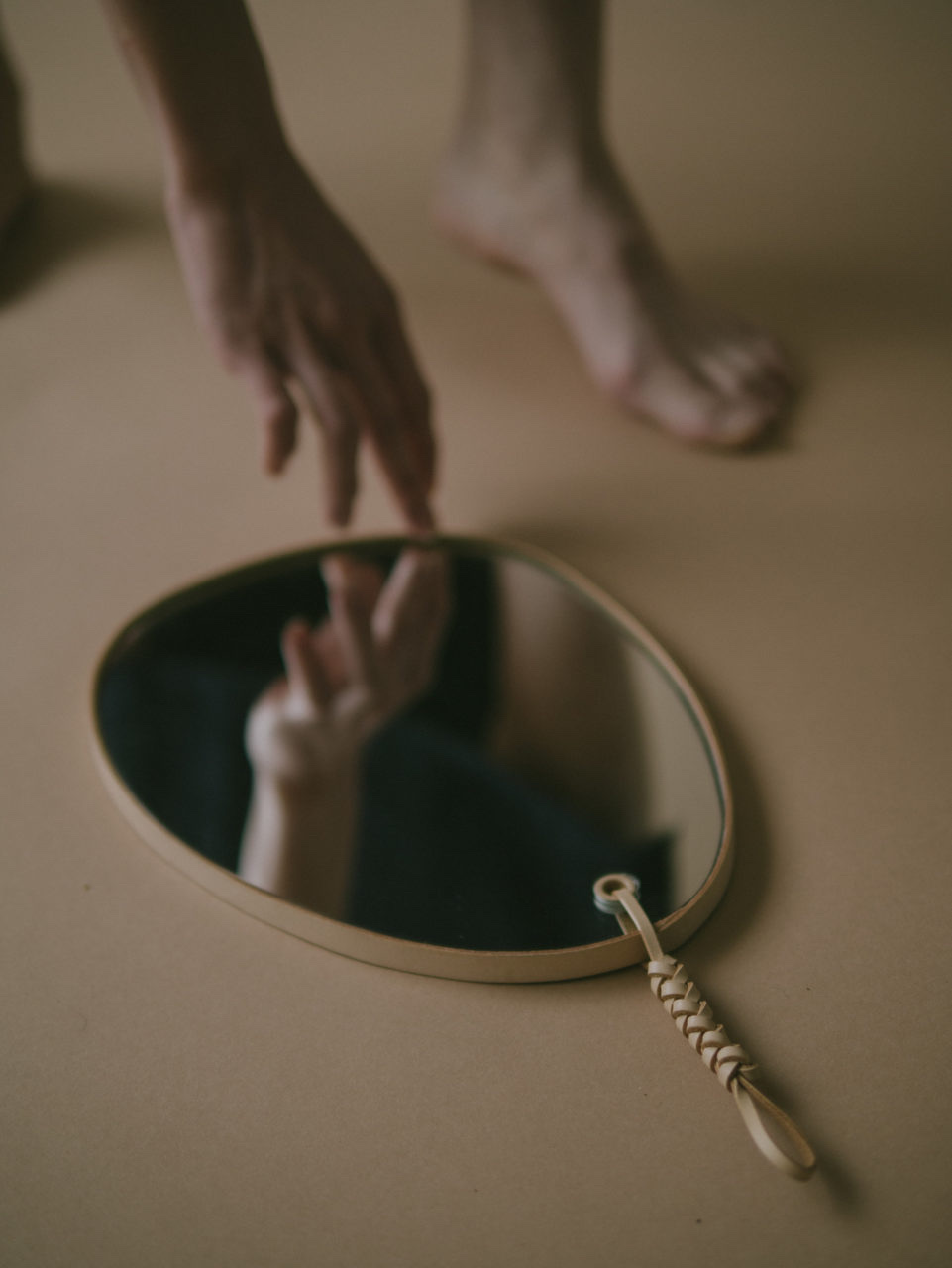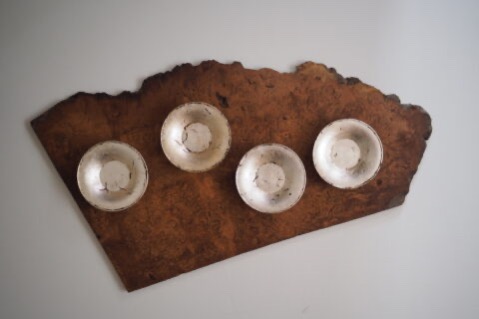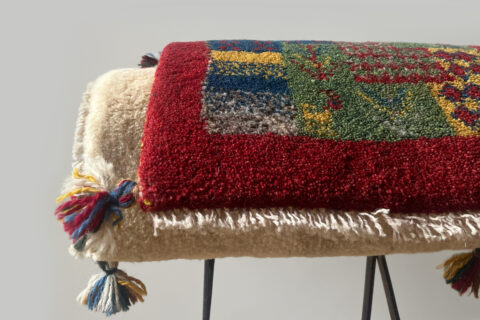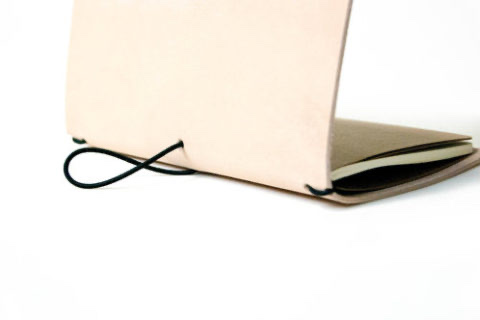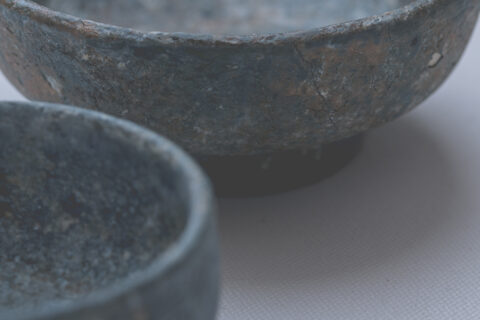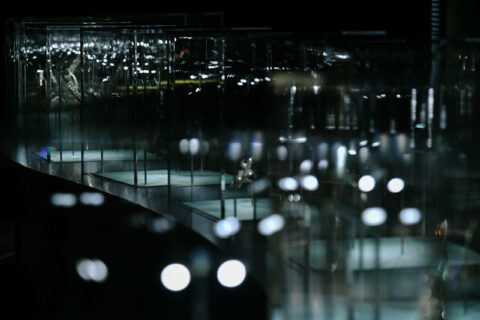以緩慢的步調構想、設計、製作、試驗、檢視自己生活裡重視的。這是如此思考了兩三年的作品。「我們自己是最挑剔的消費者,以前會惴惴不安,覺得這樣固執的個性會不會太脫離社會,後來發現,也是這樣的特質才可以磨出自己很喜歡很滿意的東西。」久一點沒關係,生活中累積的讓它慢慢成長,終會有天孵化。
在你心中,鏡子是什麼模樣的?沒有分明的棱角,也不是很公整的圓,就一個長長的、是一顆鵝卵石的形狀。那是團隊心中理想的模樣。我想起有人每天畫圓進行禪修,每天的圓卻都只屬於下筆一刻,不求完美,就只是持續地畫。
團隊在處理鏡緣的切割時費勁很久,才能讓鏡的邊緣生成有機的線條,擁有自然生長痕跡的植鞣牛皮再將鏡子包裹。「鏡緣有如海浪一波一波沖刷而成,線條渾厚而放鬆。」像海裡的石頭,被日子打磨或會漸露柔潤表面,在日月星移時放光。
Kamaro’an的作品裡的自然形態一直來自部落的日常,循著大地生息的身體會記得山海的觸感,記得水的流動、山稜的線條與海的霧氣、風聲與浪。從前部落的技藝源自生活所需,用黃藤、苧麻編成魚簍、背簍、米篩,一繩編到底是阿美族傳統的繩結工藝,紮實穩固能夠應付日常作業。現在換上堅韌的皮繩來掛著鏡子,同樣不用添加其他配件也能長久使用。
Taking slow steps to conceptualize, design, produce, experiment, and at last, inspect the important matters in life — this is precisely the reason why it took a good two to three years for them to come up with this product. “We are the most demanding consumers. We used to be bothered by the thought of whether we were too stubborn for this society. We gradually came to realize such stubbornness is, in fact, what motivates us to create something we genuinely appreciate.” Perhaps this is the essence of incubating an idea. The passage of time would make things happen at the end.
How should a mirror look like? In the mind of the team, a mirror should have no pointed edges, it does not have to be in a perfect circle; instead, a slightly elongated pebble shape looks ideal. That reminds me of how some people meditate by drawing a circle every day. It is not the pursuance of perfectness but the continuity of this recurring practice that counts.
The team spent a great deal of effort on cutting the mirror rim before they could finally acquire the organic angle they have in mind. The back of the mirror is then wrapped by handcrafted Italian vegetable-tanned leather. “The mirror rim exudes a substantial yet relaxing vibe as if it was made by the washing effect by sea waves over time.” Like the coastal rocks that shine due to the long period being polished by the waves of seawater.
The products by Kamaro’an are always a reflection of how the indigenous tribes live their everyday life. Deeply rooted in their nature, the indigenous people live close to the land and soil. They are profoundly sensitive to climatic change shown by wind, mist, and even sea waves. In the old days, the craftsmanship of the tribes stems from the needs in a primitive lifestyle. They weave rattan and hemp into various fishing nets, baskets, and sifts, which are equally durable and practical. The Amis tribes have been passing down their weaving techniques through generations. They have applied the same technique to weave a sturdy knot to hang the pebble-shaped mirror firmly. This is bound to be a simplistic yet durable household item.
